An inclusive, communicative Italian program offering an exciting cultural learning experience



An inclusive, communicative Italian program offering an exciting cultural learning experience


KLETT WORLD LANGUAGES is a publishing house specializing in print and digital instructional materials for learning and teaching world languages.
Our mission is to help students become global citizens by developing their intercultural and critical thinking skills through language learning. We aim to help students learn and use language in real-life situations by creating engaging and meaningful content that sparks their curiosity and motivates them to learn.
We strongly believe that teachers play a key role in language learning, and part of our mission is to support them and to provide ample opportunity for professional development.
Having them is not enough. We live by them.
Because everyone on the core KWL team has a background in education and works closely with educators and students, our commitment goes far beyond our daily work. We understand the needs of educators and students and we are passionate about looking for solutions and tools to help them succeed.
We are committed to providing high-quality print and digital content at affordable prices to all who want to learn a language. We guarantee lower prices for high-quality content and simple, easy-to-use technology.
We view languages as tools for communication and action. To learn a language and build authentic communicative competency, students need a realistic context, a true need to communicate, a focus on meaning, and the right linguistic resources. That is what we provide in our educational materials.
Our educational materials focus on the most current pedagogical methodology. They follow the ACTFL Guidelines for Proficiency, include Can-Do statements, and address the 5 Cs. Our digital resources provide original and authentic content via a simple and easy-to-use platform.
We see educators as our partners, and the core of our mission is to support them by providing professional development opportunities, highquality documents and activities, and instructor resources in an easily accessible format.
Our content is created to help students use language to communicate and interact with other communities and cultures both in the United States and abroad. Our books present a respectful, modern, and open-minded perspective of our world and its cultures that allows students to dismantle stereotypes and to cultivate an awareness of global concerns.
DAVVERO is a studentcentered Italian program for young adults that offers a methodological approach anchored by actions. Microtasks throughout the lesson cycle prepare learners for the final projects at the end of each chapter. Culture takes center stage through diverse authentic media and documents
DAVVERO is...
A student-centered, 21st century, comprehensive language and culture program
A communicative program where real-world language and projects take center stage
A meaningful and motivating approach to the Spanish language
A gateway to culture and language throught authentic materials
A program striving to make learning engaging, relevant, and impactful

Communicationcentered:
Students create projects and make decisions that relate to their reality through taskbased activities
Authentic documents: DAVVERO incorporates authentic resources to promote a deeper grasp of Italian culture and challenge stereotypes
The three modes of communication —interpretive, interpersonal and presentational modes— are integrated into the lesson sequences
A communicative approach to grammar where students first focus on meaning, then on structures
A multidisciplinary approach engages students in acquiring real-world skills by drawing content from diverse fields
Intercultural Learning: The program promotes diverse perspectives, cultural understanding, and real-world global awareness

DAVVERO is a two-level program for introductory through intermediate courses.
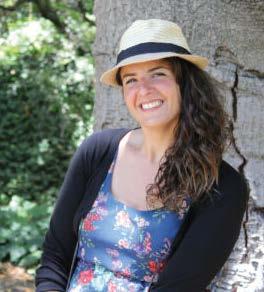
Using the DAVVERO program has truly transformed my Italian classes. My students are not just memorizing vocabulary; they are actively communicating and expressing themselves in Italian. The program’s emphasis on real-life conversations and cultural immersion has made learning enjoyable and meaningful.
Read the case study at www.klettwl.com/case-studies
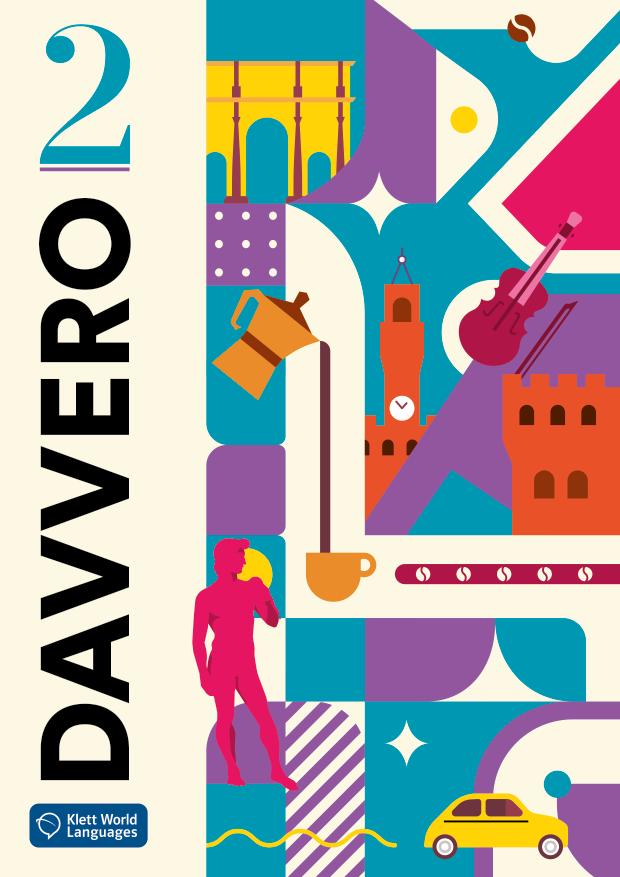

The KWL Hub is a platform offering digital content and resources for students and teachers who work with DAVVERO. It is designed with a clear purpose in mind: to improve teaching and learning experiences with engaging content and helpful, user-friendly tools.
The KWL Hub is easy, flexible, and intuitive for all users. It includes a variety of resources, as well as robust functionalities that allow teachers to personalize the textbooks, assign homework, correct students’ work, offer feedback, create their own content, track the progress of each student, etc.
The KWL Hub is available as a website and as an app.
The KWL Hub offers:
• An enriched eText version of the Student Edition
• An eText version of the Annotated Instructor’s Edition
• An interactive version of the Student Edition
• An interactive version of the Annotated Instructor’s Edition
• Grammar video tutorials
• Authentic videos
• Audiolettura, audio recordings by native speakers
• Testi mappati: a “mapped” version of the text
• Cultural dossier
• Assessments: quizzes and chapter tests
• Scripts, answer keys
• Closed captions and audio descriptions
• And many more!
Compatible with:
- Smartphones and tablets: iOS and Android.
- Computers: Windows, Mac, Chrome OS and Linux.
VERSION OF THE STUDENT EDITION
Interactive, browser-friendly versions with sizeadaptable pages that allow for a full digital learning experience. Students can write directly in the writing fields, record themselves, self-correct, re-do activities, attach files and send all of their work to the teacher.
EBOOK VERSIONS OF THE STUDENT EDITION AND INSTRUCTOR’S EDITION
eBook versions that allow teachers and students to browse through all the pages and grant them access to all of the video and audio files.
0
Il bel paese
1
Ciao a tutti!
• Communicating in class
2
Cose di famiglia
3
I gusti sono gusti
• Greeting
• Introducing oneself and others
• Asking for and giving personal information (I)
• Distinguishing between formal and informal registers
• Articulating reasons for studying Italian
• The alphabet
• Gender of nouns
4 Che giornata!
• Asking for and giving personal information (II)
• Describing the dispositions and physical characteristics of people
• Speaking about one’s personal life
• Expressing tastes and preferences
• Expressing agreement and disagreement
• Speaking about hobbies and free time
• Describing personality
• Speaking about one’s routines
• Expressing agreement and disagreement
• Asking for and stating the time
• Informing oneself about time schedules and frequency
• Subject personal pronouns (I)
• Present tense indicative of regular verbs ending in -are, -ere, essere, avere, stare 1st-3rd person singular)
• Indefinite articles
• Singular definite articles
• Noun/adjective agreement (I)
• Interrogatives: come, dove, perché, quale, quanto, quando
• Qualifying adjectives (I)
• Prepositions: a, di, in, per
• Negation: no, non
• Connectives: e, o
• Subject personal pronouns (II)
• Present tense indicative of verbs ending in -are, -ere, the verbs essere, avere, stare, fare and chiamarsi
• Possessive adjectives
• Qualifying adjectives (II)
• Plural definite articles
• Noun/adjective agreement (II)
• Present tense indicative of the verb piacere and of -isc- verbs
• Indirect object pronouns
• prepositions: a, e
• Connectives: perché, anche
• Adverbs: tanto, molto, moltissimo un sacco abbastanza
• Present tense indicative of -ire verbs (dormire, finire)
• Reflexive verbs Adverbs of frequency
• Adverb placement (I)
• Verbal periphrasis (cominciare a, continuare a, finire di + infinito)
• The interrogative quando
• Articulated prepositions
• Numbers
• Months and seasons
• Classroom vocabulary
• Salutations
• Adjectives of nationality and their respective countries
• Discourse markers: ma, beh
• Vocabulary for describing disposition and physical characteristics
• Professions
• Connectives: ma, però, e
• Discourse markers: allora, dunque
• Collocations with verbs of free time
• Vocabulary for tastes, interests, hobbies
• Discourse markers: certo, ma va
• Expressing agreement and disagreement: anche, neanche, invece
• Verbs and vocabolary of daily activity
• Moments of the day
• Discourse markers: ah, sì
• Tickets
• Flyers
• Signs
• Identity documents
• Enrollment forms
• Brief dialogues
• Interview
• The Italian language
• The symbols of Italy
• Pronunciation of the letters of the alphabet
• Italy and its cultural heritage
• Interview
• Infographic
• Announcement
• The family in Italy
• Foreigners in Italy
• The difference between the open e [ɛ] and the closed e [e]
• The difference between the open o [ɔ] and the closed o [o]
• The difference between [k] and [tʃ], [g] and [dʒ]
• The difference between [ɲ] and [ng]
• The difference between [l], [ll], [ʎ], [gl]
• Stress placement
• Intonation: affirmation, questioning, exclamation
Compiti finali
• Create a picture book of greetings and presentations
• Create and fill out an enrollment form
21
• Article
• Infographic
• Test
• Interview
• Social network personal profiles
• Blog
• Test
• Article
• Interview
• Conversations
• Italians and free time
• The things most loved and hated by Italians
• The difference between [ʃ] and [sk];
• Intonation: expressing surprise, interest, agreement and disagreement
Compiti finali
• Categorize family models
• Introduce people dear to you
29
Compiti finali
• Make an infographic about the tastes of the students in class
• Find the most similar classmate
51
75
• Time schedules in Italy
• The habits and hang-ups of Italians
• The differences between unvoiced, voiced, palatal and velar consonants
• The difference between [l], [ll], [ʎ]
Compiti finali
• Make a list of the Sunday activities that make you happy
• Prepare a test for a classmate and decide what type of life she/he leads 99
5
Parla come mangi!
6
Personaggi e storie
• Speaking about dietary habits
• Asking for and giving information about food products
• Expressing quantity
• Communicating the presence or absence of something or someone
• Partitive articles
• Direct object pronouns
• The partitive ne
• C’è / ci sono, manca / mancano
• Indefinite adjectives (I)
• Collective nouns
• The impersonal construction
• The preposition da
• Narrating a biography
• Speaking about past events
• Giving news
• Reacting to news
7
Tutta mia la città
8 Questione di stile
• Locating in space
• Describing a city
• Asking for and giving information about places
• Recounting and commenting on travel experiences
• The passato prossimo
• Regular and irregular past participles
• The auxiliary verbs essere and avere
• Past participle and subject agreement
• Adverb placement (II)
• The adverbs ancora, già, mai, appena
• The difference between the uses of essere and esserci
• Nouns and adjectives ending in -co, -ca, -go, -ga
• Indefinite adjectives and adverbs (II)
• The past perfect (II)
• The locative ci
• Invariable nouns
• Communicating and seeking information in a store
• Speaking about clothing and style
• Giving advice
• Asking and giving permission
• Expressing necessity and obligation
• The present indicative of volere, dovere, potere
• Forms of courtesy (vorrei, volevo)
• The adjective bello
• Avere bisogno di + infinito / bisogna + infinito / si deve + infinito
• Affirmative and negative imperatives
• Imperatives with pronouns
• The construction ce + pronome diretto
• Vocabulary for expressing measures and quantity
• Food vocabulary
• Discourse markers: beh, boh, mah
• Verbs for speaking about life experiences
• Time indicators
• Expressions for reacting to news
• Discourse markers: sì?, davvero? mammamia! non ci credo!
• Expressions of place
• The months of the year
• City and travel vocabulary
• Discourse markers: non so, senti
• Vocabulary for fashion, clothing and accessories
• Colors
• Expressions for special occasions and anniversaries
•
•
•
• Shopping list
• Article
• Forum
• Test
• Menu
• Conversations in a bar or restaurant
• Biography
• Podcast
• Resumé
• Brief dialogues
• News
• The menu
• Products designated DOC, DOP, IGP, etc.
• The difference between [s] and [z]
• The difference between [ts] and [dz]
• Intonation: affirmation, questioning, exclamation
• Some Italian writers
• Ways of making the news in Italy
• Paparazzi
• Travel and hotel websites
• Travel magazines
• Blog
• Reviews of places and tourist attractions
• Map
• Blog
• Conversations about clothing and fashion
• Discussion forum
• Articles
• Test
• Dialogues in stores
• The cultural heritage of Italian cities
• The city of Venice
• The difference between [g] and [dʒ]
• The difference between [k] and [tʃ]
• The difference between [l], [ʎ] and [ɲ]
• Intonation: expressing curiosity, surprise, disappointment
• Double and single consonants
• The distinctive use of the accent (e/è, da/dà, là/la
• The style of Italian clothing
• Holidays and special occastions
• Gifts for special occasions (birthday, graduation, wedding...)
• Intonation: expressing agreement, disagreement, surprise, disappointment
• Intonation: affirmation, questioning, exclamation
• The different stress placement in homographic words
Compiti finali
• Conducting a study of the class’ dietary consumption
• Presenting the groceries typically purchased in one’s own country
123
Compiti finali
• Produce a class timeline
• Interview a classmate and write their resumé as of 2035
Compiti finali
• Promote city area or a city
• Give information about and describe a city area/ neighborhood
149
173
Compiti finali
• Choose a gift for a classmate
• Describe the most beautiful and the ugliest gifts you’ve ever received
199
9
Siamo così
10
Case di stile
• Expressing emotion
• Speaking about problems and difficulties
• Expressing agreement and disagreement
• Describing objects that we possess and use
• Expressing prior and subsequent actions
• Describing a home
• Locating in space
• Expressing opinions and preferences
• Making comparisons
• Verbs for expressing difficulties and emotion
• Verbs with prepositions
• Direct object pronouns (review)
• The partitive ne
• The construction ce + direct object pronoun (review)
• The past infinitive
• Prima di / dopo
• Indefinite adjectives, pronouns and adverbs (review)
• Adjectives for describing personality and mood
• Colors
• Verbs of communication
• Discourse markers: come dire?, diciamo, cioè
11
Correva l’anno…
12
Artigianato e mestieri
• Describing past routines and situations
• Speaking about one's childhood
• Making comparisons between the past and the present
• Speaking about your skills and offering a service
• Speaking about damages and repairs
• Asking and offering to do some home project
• Making an appointment
• Essere and esserci (review)
• The passato prossimo (review)
• The Imperfect tense (I)
• Comparatives of equality, majority and minority (I)
• The Imperfect tense (II)
• The uses of the imperfect tense and the passato prossimo
• The contrast between the present and past tense
• Time indicators: prima, dopo, sempre, tutti i giorni, ogni giorno, poi, ora, adesso
• The conditional present (I)
• The present indicative of sapere, potere (review)
• Stare + the gerund
• Pronouns with infinitives
• Past participle agreement with direct object
• Pronouns and the pronoun ne
• Ti andrebbe, hai voglia di...
• Vocabulary of home and furnishings
• Expressions of place
• Discourse markers: quindi, vediamo
• Verbs and vocabulary of work and school
• A 20 anni / Da giovane... Prima / adesso
• Discourse markers: ora, poi, allora
• Vocabulary for home repairs, tools and do-ityourself projects
• Expressions related to accepting, refusing, apologizing and justifying oneself
• Discourse markers: a proposito, comunque
• Test
• Narrative
• Post
• Podcast
• Informative text
• Article
• Conversation
• Interview
• The most important objects in Italians’ daily lives
• The pronunciation of the letter i in consonant sequences gia, gio, giu, cia
• Intonation: affirmation, exclamation, questioning
• Intonation: disappointment, surprise, interest, concern
• Italian design in the 1950’s
• Styles of decor
• Questionnaire
• Narrative
• Blog
• Interview
• Infographic
• Article
• Announcement Conversation
• Article
• Chat
• Blog
• Telephone calls
• The Italian school of yesterday and today
• The changing Italy: from the mid-20th century to today
• Evolution of Italian fashion
• The difference between unvoiced [z] and voiced [ʒ]
• Stress placement in the conjugation of the imperfetto
• Single and double consonants
• Velar and palatal consonants: [k], [g], [dʒ], [tʃ]
Compiti finali
• Introduce a classmate
• Present three things which are indispensable in your country
• Artisans and Italian handcrafted products
• The sounds [ɲ], [ʎ] nd the double [n]
• Intonation: proposing, accepting, refusing
Compiti finali
• Furnish the spaces of a school: library, cafeteria, reading room, classroom.
• Present and contrast the design of various eras
Compiti finali
• Make a poster with elementary school memories
• Prepare the presentation of the fashion of a decade in your country
Compiti finali
• Create a virtual space for the class in which services are offered
• Present a do-it-yourself activity that you like or that you would like to learn how to do
223
245
269
293
13
Società del benessere?
14
Lo compriamo?
• Speaking about time management
• Speaking about ailments and symptoms
• Asking for and receiving advice
• Hypothesizing
• Asking for and giving information about objects to be bought or sold
• Expressing preferences and opinions
• Making purchases: price, characteristics, forms of payment and shipping, etc.
• The simple future tense
• Verbs with prepositions: provare a cercare di smettere di cominciare a
• Statements of the real conditional
• Stare per + infinitives
• Some irregular plural nouns
• The formal imperative: affirmative and negative
• The imperative with pronouns (review)
• The comparative and superlative forms of buono bene grande e piccolo
• The absolute and relative superlatives
• The impersonal si
• Relative pronouns: che, cui
15 Andata e ritorno
• Recounting a trip
• Contrasting various types of travelers
• Asking for and giving road directions
16 Fatti e misfatti
• Expressing hypotheses and opinions
• Organizing a speech
• Expressing the obligation and necessity of civic education
• Speaking about heritage and civic sense
• The passato prossimo of the verbs cominciare, finire, potere, dovere, volere (review)
• Verbs that can be used with two different auxiliaries
• Metterci and volerci
• Adverbs ending in -mente
• Pensare di + infinitives
• Avere bisogno di + infinitives / nouns
• Suffix-modified nouns and adjectives
• Causal connectives
• Temporal connectives
• The conditional present (II)
• Expressions of obligation and necessity: è necessario, si deve, bisogna
• The present and past subjunctive
• Penso, credo che + present and past subjunctive
• Vocabulary related to health (medicines and ailments)
• The parts of the body
• Expressions for describing symptoms
• The discourse marker magari
• Vocabulary for purchasing
• Adjectives for describing objects (materials, colors, etc.)
• The prepositions di, da, in
• The expressions diverso, simile, uguale, stesso/a
• Discourse markers: insomma, dunque, allora
• Vocabulary for travel and tourist services
• Vocabulary for road directions
• Weather vocabulary
• The discourse marker proprio
• Civics vocabulary
• The expressions secondo me, io al tuo posto
• Connectives: in primo luogo, innanzitutto, infine
• Discourse markers: va beh, chiaro, guarda
• Test
• Article
• Letter
• Telephone call
• Chat
• The Mediterranean diet and longevity
• The Sardinian centenarians
• Intonation: the future and hypotheses
• Intonation: magari
• Single and double consonants
Compiti finali
• Exchange advice about time management
• Imagine and present a functional and healthy society of the future
• Infographic
• Announcement
• Article
• Blog
• Conversation
• Interview
• The objects most frequently purchased by Italians
• The power of influencers
• Interview
• Article
• Radio program
• Narrative
• Itinerary
• Italian television programs dedicated to travel
• Monosyllables
• The silent consonant h
• Intonation: advice and instructions
• Syntactic doubling
• Intonation: affirmation, exclamation, questioning
• The difference between [kw] and [gw]
Compiti finali
• Make an infographic about purchasing habits and the objects most frequently purchased by the class
• Prepare an announcement of a used object for sale online
315
• Awareness campaign
• Article
• Tweet
• Interview
• Civic handbook
• Italian culturalartistic heritage
• Civic education and vandalism
• Street art
• Intonation: hypotheses and indignation
• The euphonic d
• Homographs (open and closed vowels)
Compiti finali
• Describe various types of tourists
• Recount an unusual or memorable travel experience
337
359
Compiti finali
• Formulate the class’ civic handbook
• Write one’s opinion about a civic theme 381
1
NEL CORPO E NELL'ANIMA
Percorso 1: Emozioni in note
Percorso 2: Mettiamocela tutta!
• Esprimere sentimenti e stati d’animo
• Esprimere le proprie preferenze musicali
• Parlare dei generi musicali
• Parlare dell’attività fisica e del benessere
• Raccontare esperienze legate allo sport
• Esprimere la propria opinione sui valori dello sport
• I pronomi relativi (ripasso)
• Il congiuntivo presente
• Il suffisso -ità
• Le frasi oggettive (con verbi di opinione e di stato d'animo)
• Congiuntivo o indicativo?
• I verbi pronominali importarsene, fregarsene, smetterla, tenerci
• I comparativi (ripasso)
• Il trapassato prossimo
• I verbi pronominali farcela, darci dentro, mettercela tutta
• La preposizione da (funzione)
• Alcuni indicatori temporali
• I prefissi negativi s-, dis-, in-
• Il superlativo relativo
• Gli avverbi proprio e davvero
• Le frasi eccettuative
IDEE GENIALI
Percorso 1: Pensiero creativo
Percorso 2:
Non solo scienza
• Descrivere oggetti di materiale riciclato
• Esprimere opinioni e preferenze
• Discutere di ecologia e sostenibilità
• Parlare di arte ambientale
• I pronomi combinati
• Il gerundio causale
• Occorrere e volerci
• Alcuni usi di ci
• Alcuni usi di ne
• Le frasi concessive esplicite
• Il congiuntivo passato (ripasso)
• Parlare di notizie a tema scientifico e parascientifico
• Descrivere oggetti tecnologici
• Parlare di informazione e comunicazione
• Riferire notizie
• Gli aggettivi in -bile
• Il prefisso negativo in-
• Alcuni usi del condizionale
• Il futuro composto
• I pronomi possessivi
• Il pronome relativo chi
• Il passato prossimo e l’imperfetto di sapere e conoscere
• Le interrogative indirette
• Il lessico di emozioni e stati d'animo
• Le metafore per esprimere emozioni e sentimenti
• Gli aggettivi e i sostantivi delle qualità e caratteristiche personali
• I generi musicali
• Il segnale discorsivo dai
• Il lessico dell'attività fisica e del benessere
• Il lessico delle emozioni e dei valori dello sport
• Il segnale discorsivo mica
• Il lessico di materiali e oggetti
• Il lessico dell’arte ambientale e del riuso
• Le locuzioni avverbiali: un sacco di, senza dubbio
• Il segnale discorsivo anzi
• Il lessico di scienza, tecnologia e comunicazione
• Le parole straniere in italiano
• I segnali discorsivi figurati, figuriamoci
APPROFONDIMENTI: p. 57 I giochi paralimpici; p. 95 Tecnologia e LIS (Lingua italiana dei segni)
• Test
• Intervista
• Blog
• Conversazione
• Articolo
• Chat
• Biografia
• Podcast
• Intervista
• Articolo
• Chat
• Volantino
• Commenti sui social
• L'Italia in musica: storia di un Paese che cambia (Måneskin, Ghali, Madame, Margherita Vicario, Mahmood)
• Bebe Vio, campionessa paralimipica
• Roberto Bolle, una vita nella danza
• Le ragazze del calcio
• Le consonanti semplici e doppie
• Intonazione: sorpresa e incitazione
Compiti finali
• Preparare un test di personalità per l’insegnante
• Elaborare una playlist per un momento della giornata 20
• Intervista
• Pin
• Chat
• Articolo
• Testimonianze
• Blog
• Il ReMade in Italy
• Spazi recuperati e arte ambientale in Italia
• L'Arte povera (Michelangelo Pistoletto, Alighiero Boetti, Marisa Merz)
• La s sorda e sonora
• Intonazione: esclamare e domandare
Compiti finali
• Elaborare un volantino per promuovere un'attività fisica
• Raccontare la storia di uno/a sportivo/a
• I suoni [p] e [b]
• Intonazione: anzi
• Blog
• Articolo
• Conversazione
• Notizie di cronaca
• Radiogiornale
• Intervista
• La letteratura fantascientifica in Italia
• I suoni [f] e [v]
• La concatenazione (I)
Compiti finali
• Presentare un progetto di recupero di uno spazio in disuso
39
• Creare un oggetto con materiale riciclato 58
Compiti finali
• Proporre un progetto di domotica per la classe
• Redigere una notizia di argomento scientifico
3
ESPERIENZE
Percorso 1:
Obiettivo lavoro
Percorso 2:
L'eco della storia
• Parlare delle proprie abilità e competenze
• Esprimere desideri
• Fare ipotesi possibili
• Il congiuntivo imperfetto
• Il periodo ipotetico della possibilità
• Esprimere desideri
• Esprimere obbligo e necessità
4
Percorso 1:
In giro per il mondo
Percorso 2: La grande bellezza
• Raccontare la vita di un personaggio storico
• Descrivere fatti in successione cronologica
• Raccontare e riassumere una storia
• Organizzare e raccontare un viaggio: alloggio, itinerario, ecc.
• Esprimere gusti e opinioni sul viaggio
• Chiedere e fornire informazioni
• Il passato remoto
• Il passato remoto e l'imperfetto
• Gli indicatori temporali
• Il condizionale composto
• Il discorso indiretto (I)
• Prima di / prima che
RICETTE PER TUTTI I GUSTI
• Parlare delle proprie abitudini di lettura
• Esprimere gusti e opinioni su prodotti culturali
• Raccontare la trama di un film o di un libro
• La forma impersonale dei verbi pronominali
• La costruzione passiva con essere, venire e andare
• La preposizione da (agente)
• L’aggettivo proprio/a
• Il lessico del lavoro e della formazione
• Il lessico delle qualità personali e professionali
• I segnali discorsivi dimmi, dica, bene
• Parlare di ricette e di gastronomia
• Descrivere utensili per la cucina e spiegarne il funzionamento
• Parlare dei propri gusti gastronomici
• Il condizionale composto (desiderio irrealizzato)
• I pronomi relativi il quale, la quale, i quali, le quali
• I nomi e gli aggettivi alterati
• Risorse per esprimere opinioni (secondo me, a mio avviso...)
• Verbi di opinione + congiuntivo
• Le frasi consecutive
• Il gerundio modale e temporale
• Gli indicatori temporali
• Occorrere e volerci (ripasso)
• Per + infinito
• Alcuni usi di ci (ripasso)
• Alcuni usi della forma riflessiva
• Il connettivo perché
• Da + infinito
• Il lessico della storia, delle biografie e della narrazione
• Il segnale discorsivo addirittura
• Il lessico del viaggio e dei servizi turistici
• Descrivere luoghi ed esperienze
• I numeri ordinali
• Il segnale discorsivo ecco
•
•
•
• Il lessico dei gusti culturali
• I generi letterari e cinematografici
• I segnali discorsivi affatto, niente
•
•
• Il lessico di ricette e gastronomia
• Gli utensili da cucina
• I segnali discorsivi aspetta, appunto
APPROFONDIMENTI: p. 133 La diversità nel mondo del lavoro; p. 171 Letteratura e cinema Black italian; p. 191 Mangiare insetti
•
•
•
•
•
• Commenti sui social
• Test
• Conversazione
• Lettera di motivazione
• Annuncio di lavoro
• Intervista
• Articolo
• Il sistema educativo in Italia
• Eccellenze italiane: le 4A del Made in Italy
• I suoni [b] e [v]
• L'enfasi (I)
• Racconto cronologico
• Podcast
• Biografia
• Conversazione
• Trama
• Articolo
• Recensioni
• Conversazione
• Guida turistica
• Storia dell'Italia
• La spedizione dei Mille
• Lorenzo de' Medici e Isabella d’Este
• I romanzi cavallereschi: Orando furioso e l’Opera dei Pupi
• Itinerario nella provincia di Trapani
• I parchi artistici in Italia
• Il Grand Tour
• I suoni [ʃ] e [ss]
• Intonazione: addirittura
Compiti finali
• Partecipare a un recruiting day
• Redigere una lettera di motivazione
• Infografica
• Podcast
• Intervista
• Articolo
• Programmazione cineteca
• Trama di un film
• Chat
• Ricette
• Blog
• Articolo
• Intervista
• Conversazione telefonica
• Programma di un evento
• Abitudini di lettura degli italiani
• Libri e autori italiani più letti all'estero
• Letteratura migrante: il concorso Lingua Madre
• I suoni [k] e [g]
• Intonazione: ecco
Compiti finali
• Scrivere un mini poema a più mani
• Scrivere la cronistoria di un'epoca importante del proprio Paese
Compiti finali
• Organizzare un itinerario di viaggio in Italia
• Descrivere un sito d’interesse
96
115
134
• I suoni [t] e [d]
• Intonazione: la frase conclusiva e la frase continuativa
Compiti finali
• Preparare un programma culturale per la classe
• Scrivere la trama commentata di un libro o un film
153
• Ricette tradizionali italiane
• I mercati in Italia
• I suoni [r] e [l]
• L'enfasi (II)
Compiti finali
• Creare un evento gastronomico dedicato a una regione italiana
• Scrivere la ricetta di una tua specialità
171
6
PUNTI DI VISTA
Percorso 1: Voglio vivere così
Percorso 2: Tradizione vs modernità
• Esprimere la propria opinione su stili di vita differenti
• Elaborare ipotesi
• Valutare pro e contro di una filosofia di vita
• Il periodo ipotetico della realtà e della possibilità (ripasso)
• L'infinito come nome
• L'infinito con prima di e dopo
• I pronomi dimostrativi ciò, questo, quello
• Il cui, la cui, i cui, le cui
• Il lessico delle scelte e degli stili di vita
• Alcune espressioni idiomatiche
• Il segnale discorsivo che so
• Proporre alternative
• Considerare e valutare differenti punti di vista
• Esprimere il proprio punto di vista
Percorso 1:
Io non ci sto!
Percorso 2:
Oltre i confini
• Esprimere opinioni su temi di giustizia e ingiustizia sociale
• Esprimere desideri e volontà
• Discutere sui diritti degli animali
• Il gerundio presente (valore consecutivo, ipotetico e concessivo)
• Gli avverbi di giudizio e opinione
• I connettivi
• I nomi collettivi
• Il superlativo relativo (ripasso)
• La concordanza dei tempi dell’indicativo
• Come se e senza che + congiuntivo imperfetto
• È giusto / ingiusto / assurdo che + congiuntivo
• Le frasi concessive (ampliamento)
• voglio + congiuntivo presente e vorrei + congiuntivo imperfetto
• La concordanza dei tempi: condizionale e congiuntivo
• Gli indefiniti
• Il lessico dei diritti civili
• Il lessico delle feste e tradizioni popolari
• Il lessico dell'architettura
• Il segnale discorsivo per così dire
• Il lessico della giustizia e ingiustizia sociale
• Il lessico relativo ai diritti degli animali
• Gli animali e i versi
• Il segnale discorsivo praticamente
• Raccontare esperienze
• Parlare di stereotipi
• Riportare dati sui movimenti migratori
• Dibattere su cittadinanza e identità
• Le frasi relative con congiuntivo
• La suffissazione
• Il participio passato: valore temporale e causale; come aggettivo e nome
• Le parole composte
• Fare + infinito
APPROFONDIMENTI: p. 229 Le pietre d'inciampo; p. 267 L'italiano e la questione del genere
• Il lessico relativo a cittadinanza, migrazioni, stereotipi e identità
• I verbi pronominali: volercene, farsene (una ragione), avercela (con qualcuno), prendersela
• Il segnale discorsivo veramente
• Articolo
• Intervista
• Blog
• Podcast
• Estratto di narrativa
• Branchie di Niccolò Ammaniti
• I suoni [g] e [dʒ]
• Intonazione: che so
Compiti finali
• Proporre una filosofia di vita alternativa
• Organizzare il proprio anno sabbatico
• Articolo
• Podcast
• Scheda descrittiva
• Conversazione
• Sondaggio
• Manifesto
• Diritti civili in Italia
• Architettura contemporanea in Italia
• Feste e folklore
• Antonio Sant'Elia e il Manifesto dell'Architettura Futurista
• Riconoscimento di parole omografe distinte per la posizione dell'accento
• Intonazione: affermazione e dubbio; proposte ed esclamazioni
Compiti finali
• Fare una proposta per modernizzare una tradizione
• Scrivere un articolo di opinione su un’opera architettonica contemporanea
190
• Infografica
• Podcast
• Articolo
• Testimonianze
• Documento normativo
• Campagna di sensibilizzazione
• Intervista
• Documento normativo
• Podcast
• Intervista
• Infografica
• Testimonianze
• Mappa
• Articolo
• Leggi e articoli della Costituzione
• Dichiarazione Universale dei Diritti dell'Animale
• Libri per l'infanzia: Storie della buonanotte per bambine ribelli
• Diritti del cittadino europeo
• Stereotipi: le mappe di Yanko Tsvetkov
• Le canzoni degli emigranti
• Distinzione tra gn e la sequenza ni + vocale
• Intonazione: ipotesi e indignazione
• Intonazione: praticamente
Compiti finali
• Redigere un manifesto contro il sessismo
• Creare e sostenere una campagna di sensibilizzazione per il rispetto degli animali
209
228
• La differenza tra [gl], [ʎ]
• Intonazione: veramente
Compiti finali
• Realizzare un progetto per una mostra sul tema dell’identità
• Raccontare una storia di emigrazione o immigrazione in cui si è realizzata l’integrazione culturale
247
UNIVERSI
Percorso 1: Vita digitale
• Dare consigli e suggerimenti
• Fare proposte
• Presentare e confutare una tesi
Percorso 2: Natura amica
9 NARRARE
Percorso 1:
Tracce del passato
Percorso 2: La messa in scena
• Parlare ed esprimere opinioni sull'ecosostenibilità
• Discutere su prevenzione e conseguenze dei fenomeni naturali
• Elaborare ipotesi
• Esporre fatti in ordine cronologico
• Raccontare e riassumere una storia
• Esprimere obbligo e necessità (ripasso)
• La concordanza dei tempi al congiuntivo
• I verbi pronominali: intendersene, starsene, smetterla
• I nomi e gli aggettivi alterati (ampliamento)
• I pronomi con l'infinito
• I pronomi con l'imperativo
• Il si passivante
• La posizione dei pronomi atoni con il gerundio
• Alcuni usi delle particelle ci e ne
• Il gerundio passato con valore causale, ipotetico e concessivo
• Il periodo ipotetico dell'irrealtà
• Alcuni connettivi per esprimere ipotesi
• I pronomi combinati con ne
• I tempi della narrazione storica
• L'uso della virgola
10 TI PRENDO IN PAROLA
• Descrivere azioni e opere d’arte
• Collocare nello spazio
• Riportare un discorso
• Individuare le caratteristiche di varie tipologie testuali
• Descrivere immagini
• Interpretare un messaggio
• Descrivere azioni: aggettivi, avverbi, gerundio e come se + congiuntivo imperfetto
• I verbi in forma transitiva e pronominale
• I verbi con doppio ausiliare
• Le espressioni per collocare nello spazio
• Il discorso indiretto
• I prefissi mega-, maxi, ultra, super, vice-
• La posizione dell’aggettivo
• La costruzione impersonale (ampliamento)
• La dislocazione a sinistra
• Le frasi avversative
• a + infinito e da + infinito
• Il lessico del web
• I connettivi per organizzare il discorso
• I segnali discorsivi: dico, dico io
• Il lessico relativo a cambiamenti climatici, ambiente e sostenibilità
• Il segnale discorsivo sai
• Il lessico relativo a pluralità e ricchezza culturale, linguistica e gastronomica
• I connettivi per esprimere ipotesi
• Il segnale discorsivo che ne dici
•
•
•
• Il lessico delle arti sceniche
• Il lessico per descrivere azioni e immagini
• Il segnale discorsivo hai capito
•
• Il linguaggio dei mass media e della pubblicità
• Espressioni per parlare di modelli estetici e sociali
• Il segnale discorsivo come no
APPROFONDIMENTI: p. 305 L'Agenda 2030; p. 343 Lingue minoritarie in Italia; p. 191 Regole per una pubblicità corretta
•
• Infografica
• Articolo
• Testimonianza
• Chat
• Citazione
• Intervista
• Manifesto
• Il Manifesto della comunicazione non ostile
• L'e-taliano
• Arte digitale: Paolo Cirio e il collettivo IOCOSE
• Infografica
• Relazione
• Podcast
• Intervista
• Citazione
• Articolo
• Post
• Mappa concettuale
• Podcast
• Scheda informativa
• Citazione
• Intervista
• Testo espositivo
• Città italiane ed ecosostenibilità
• I vulcani nell'arte: Stromboli, Etna e Vesuvio
• La differenza tra e aperta [ɛ] ed e chiusa [e]; o aperta [ɔ] e o chiusa [o]
• Intonazione: i connettivi
• Intonazione: certo
• Intonazione: le interiezioni
• Intonazione: ringraziare ed esprimere ironia
Compiti finali
• Partecipare a una riunione di un’associazione di consumatori
• Redigere un testo argomentativo su pro e contro dell’era 2.0
266
• Presentazione
• Copione teatrale
• Podcast
• Fumetto
• Testo descrittivo
• Articolo
• Conversazione
• Tradizioni culinarie dentro e fuori l'Italia: la pizza e il caffè
• Magna Grecia: tracce della dominazione greca in Puglia, Campania, Calabria e Basilicata
• Sei personaggi in cerca d'autore di Luigi Pirandello
• Giornalini a fumetti
• La pittura italiana del '900
• Alberto Giacometti
• La retrocessione dell'accento
• Intonazione: che ne dici, ma dai
Compiti finali
• Elaborare un "Lo sapevi che" su mentalità e comportamenti green
• Fare un TED Talk su un’iniziativa sostenibile
Compiti finali
• Realizzare un reportage “Sulle tracce di…”
• Raccontare la storia di un ristorante in cui si fondono diverse tradizioni culinarie
285
• Pubblicità
• Poesia
• Tweet
• Titolo di giornale
• Intervista
• Articolo
• Podcast
• Chat
• Pubblicità in Italia
• Serie TV sulla criminalità organizzata
• Armando Testa: il linguaggio pubblicitario
• La differenza tra [f] [v]
Compiti finali
• Scrivere e rappresentare una scena teatrale
• Ideare la striscia di un fumetto per un concorso
304
323
• I suoni [b] e [v]
• I suoni [ʃ] e [sk]
• Intonazione: come no
Compiti finali
• Creare uno spot per trasmettere dei modelli sociali realistici
• Scrivere una poesia
341
In addition to the Student Edition, DAVVERO includes the following components:
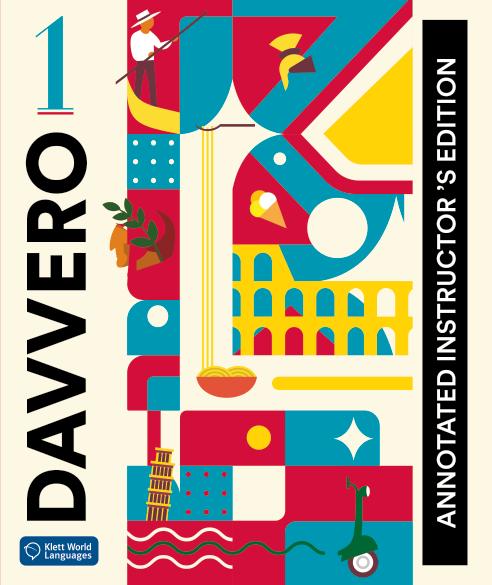
DAVVERO's supplementary materials encompass a wide range of resources, including grammar tables, maps, rubrics, course calendars, grammar and vocabulary clips, and much more.
The DAVVERO Annotated Instructor's Edition is richly annotated to accommodate diverse teaching approaches. These annotations are designed to streamline class preparation and course management while also offering suggestions for expanding certain activities.


Each text in the DAVVERO Student Edition comes with two special features to enhance language learning. TESTI MAPPATI transforms the text into a color-coded “roadmap”, highlighting frequently-used word combinations, common connectors, and complex structures. AUDIOLETTURA offers an audio version of the text, read aloud by native Italian speakers.
1. Città da vedere B p. 174-177
5. PERLE ITALIANE
Quali sono le più belle città italiane? Fare una classifica non è facile... Ecco quattro bellezze proposte da noi.
Siracusa
Siracusa è una città magica, elegante, antica e moderna allo stesso tempo. C’è un’atmosfera molto calorosa perché gli abitanti sono accoglienti e molto disponibili.
Ha un centro storico spettacolare, la parte più antica si trova sull’Isola di Ortigia. Ci sono tanti luoghi interessanti da visitare e c’è una stupenda zona balneare. La cucina è ottima!
DA NON PERDERE: Festival del Teatro Greco, Duomo, Tempio di Apollo, Lungomare.
San Gimignano
La città delle torri è un borgo medievale incantevole, nel cuore della campagna toscana. È bellissimo passeggiare tra i suoi vicoli e non serve una cartina; ci sono molti negozi, ristoranti ed enoteche per assaggiare e comprare i prodotti tipici Però, purtroppo, ci sono troppi turisti!
DA NON PERDERE: Torri, Chiesa di Sant’Agostino, piazza della Cisterna, Duomo, Museo del vino.
Verona È una città romantica, ordinata e pulita. Il centro storico è fantastico: ci sono rovine romane chiese romaniche e gotiche e palazzi rinascimentali E c’è anche un fiume, l’Adige. È piacevole passeggiare per questa città perché è molto tranquilla e c’è poco traffico.
DA NON PERDERE: Arena, casa di Giulietta, piazza Bra, San Zeno.
Ferrara
10.
CITTÀ LOVERS
Regio Parco - Torino
Meravigliosa capitale del Rinascimento, ricca di cultura e splendida in ogni stagione. Ci sono tanti musei e tante manifestazioni culturali ed è bellissimo girare per le vie del centro storico oppure passeggiare sulle mura medievali. È una città a misura d’uomo, molto elegante e con una gastronomia eccellente
DA NON PERDERE: Castello Estense, Palazzo Schifanoia, Cattedrale di San Giorgio.
Una delle zone più vivaci della città con gli atelier, gli studi di design e caffè più interessanti. Gli spazi industriali vivono una vita nuova grazie ai luoghi recuperati, come loft. Ci sono anche delle piste ciclabili per gli amanti delle bici.
Città vecchia - Bari È l’autentico cuore di Bari con i vicoli stretti, le case bianche e i palazzi antichi. Qui si trovano le piazze più suggestive della città, la Basilica di S. Nicola e la Cattedrale. E sono tanti anche i locali e i ristoranti che animano la vita notturna. Le moto e i motorini sono i mezzi ideali per visitare questo quartiere turistico
Isola - Milano
Non lontano dal centro e collegato dalla metro, è un quartiere con antiche case di ringhiera e grattacieli. Ci sono servizi come uffici e banche, ma anche gallerie d’arte e botteghe artigiane. Non mancano bar e ristoranti per uscire la sera e alberghi per chi vuole soggiornare in un quartiere moderno
GREY: LOGICAL CONNECTORS, DISCOURSE MARKERS AND SPECIAL SINTACTIC CONSTRUCTIONS
Sample Chapter 7 • Level 1
PAGINA DI APERTURA
An opening page introduces each unit with lexical activities that elicit prior knowledge about culture and society, language skills, and learning strategies.
COMMUNICATIVE GOALS
Locating in space
Describing a city
Asking for and giving information about places
Recounting and commenting on travel experiences
Communicative goals.

Meaningful images to introduce the chapter’s topic.
Word cloud with useful vocabulary to approach with the unit.
Introductory activities to present the unit’s vocabulary.
1. Look at the picture: what comes to mind? Use a dictionary to help you.
2. Now look at the word cloud: do you recognize the building depicted? It can be found in Florence. Then, find the words corresponding to the following categories. City sites:
Adjectives used for describing the city and its sites:
3. Compare your list with a classmate’s. Together look up the words you don't know.
4. Look at the format of the text on the facing page: what’s the general theme? What kind of information can you gather? Work with a classmate.
Three work units. The chapter's linguistic and cultural content are presented and analyzed using authentic documents.
Quali sono le più belle città italiane? Fare una classifica non è facile... Ecco quattro bellezze proposte da noi.



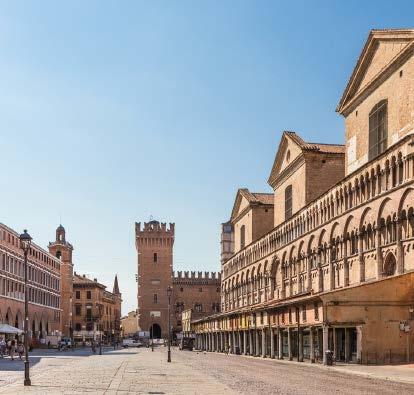
5. Read the following magazine article. Are you familiar with the Italian cities mentioned? Work with a classmate and find them on the map of Italy at the end of the book.
Siracusa è una città magica, elegante, antica e moderna allo stesso tempo. C'è un'atmosfera molto calorosa perché gli abitanti sono accoglienti e molto disponibili. Ha un centro storico spettacolare, la parte più antica si trova sull'Isola di Ortigia. Ci sono tanti luoghi interessanti da visitare e c'è una stupenda zona balneare. La cucina è ottima!
DA NON PERDERE:
Festival del Teatro Greco, Duomo, Tempio di Apollo, Lungomare.
La città delle torri è un borgo medievale incantevole, nel cuore della campagna toscana. È bellissimo passeggiare tra i suoi vicoli e non serve una cartina; ci sono molti negozi, ristoranti ed enoteche per assaggiare e comprare i prodotti tipici. Però, purtroppo, ci sono troppi turisti!
DA NON PERDERE: Torri, Chiesa di Sant’Agostino, piazza della Cisterna, Duomo, Museo del vino.
È una città romantica, ordinata e pulita. Il centro storico è fantastico: ci sono rovine romane, chiese romaniche e gotiche e palazzi rinascimentali. E c'è anche un fiume, l'Adige. È piacevole passeggiare per questa città perché è molto tranquilla e c'è poco traffico.
Ferrara
Meravigliosa capitale del Rinascimento, ricca di cultura e splendida in ogni stagione. Ci sono tanti musei e tante manifestazioni culturali ed è bellissimo girare per le vie del centro storico, oppure passeggiare sulle mura medievali. È una città a misura d’uomo, molto elegante e con una gastronomia eccellente.
DA NON PERDERE: Arena, casa di Giulietta, piazza Bra, San Zeno.
DA NON PERDERE: Castello Estense, Palazzo Schifanoia, Cattedrale di San Giorgio.
«Dai piccoli borghi, alle grandi città, l'Italia è piena di bellezze da scoprire.»
6. Read the article again and underline the adjectives used to describe the cities. Then translate them into English.
Indefinite adjectives and adverbs 5 p. 188 magica
7. Look at the highlighted words in activity 5: what are they used for? Complete the examples (left column) and circle the correct option to complete the rule for their use (right column).
C'è un'atmosfera molto calorosa.
Gli abitanti sono disponibili.
Ci sono molti negozi.
C'è traffico.
Ci sono manifestazioni.
The indefinite adverb + an adjective has a variable/an invariable form
The indefinite adjective + a noun has a variable/invariable form
8. Which city mentioned in the article would you rather visit? Discuss it with a classmate.
• A me piace / io preferisco perché è c'è / ci sono

Activities to practice language skills. Blue text indicates a language model for speaking production.

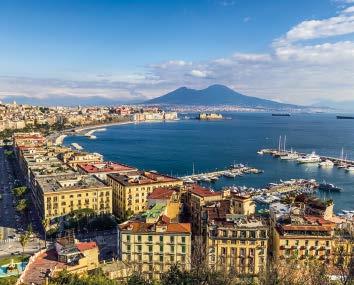
9. A radio station interviews several people to find out which city in Italy is the most beautiful. First, read the following info cards. After that, listen to the recording and place a check mark next to the information you hear.
Audio tracks to develop listening skills.
CARATTERISTICHE DA NON PERDERE
FIRENZE
meravigliosa Ponte Vecchio spettacolare Duomo ricca d'arte Battistero cara Uffizi
sporca Piazza della Signoria
vivace Palazzo dei Normanni pericolosa Cattedrale incredibile Teatro Massimo spettacolare piazza Pretoria accogliente La Martorana
a. Choose the city that, in your opinion, is the most beautiful in your country.
b. Make a list of the adjectives you need to describe the city you have chosen.
c. Review Indefinite adjectives and adverbs (p. 188) and use some of them in your description.
d. Write a paragraph to describe the city. Remember to re-read before submitting.
e. Choose some images to accompany your text.
In addition to the text templates of p. 175, you can read some descriptions on the internet.
CARATTERISTICHE DA NON PERDERE
URBINO
elegante Convento di San Francesco tranquilla Palazzo Ducale ordinata Cattedrale maestosa Galleria Nazionale
meravigliosa Fortezza Albornoz
affascinante Matera sotterranea piccola Cattedrale unica Sassi silenziosa Belvedere tranquilla Casa-grotta
BOSTON
antica affascinante vivace giovane
Activity that closes the work unit with a practical and motivating project proposal.

You can publish your text on social media, or on a digital platform shared by the class.
10. Read this blog about three rehabilitated Italian neighborhoods in different cities. Which one do you find most interesting?
• Secondo me il più interessante è.... perché
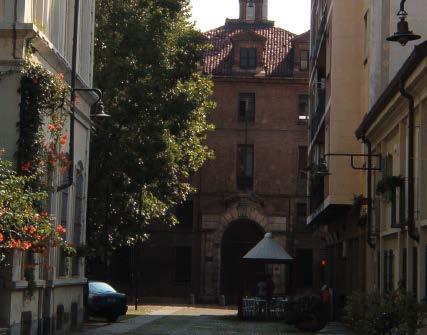
Città vecchia - Bari
È l'autentico cuore di Bari con i vicoli stretti, le case bianche e i palazzi antichi. Qui si trovano le piazze più suggestive della città, la Basilica di S. Nicola e la Cattedrale. E sono tanti anche i locali e i ristoranti che animano la vita notturna. Le moto e i motorini sono i mezzi ideali per visitare questo quartiere turistico.

Regio Parco - Torino
Una delle zone più vivaci della città con gli atelier, gli studi di design e i caffè più interessanti. Gli spazi industriali vivono una vita nuova grazie ai luoghi recuperati, come i loft. Ci sono anche delle piste ciclabili per gli amanti delle bici.

Isola - Milano
Non lontano dal centro e collegato dalla metro, è un quartiere con antiche case di ringhiera e grattacieli. Ci sono servizi come uffici e banche, ma anche gallerie d’arte e botteghe artigiane. Non mancano bar e ristoranti per uscire la sera e alberghi per chi vuole soggiornare in un quartiere moderno.
11. In the blog posts you found new adjectives to describe a city. Underline them and add them to the list on page 176. Then, try to complete the following lists of words.
servizi: piste ciclabili, metro,
locali di svago: atelier, caffè
12. Read the posts and find the plural of the following words: do you notice anything in particular? Discuss with a classmate.
Invariable nouns 5 p. 188
SINGULAR PLURAL
(la) città (l') atelier (il) caffè (il) loft (la) bici (la) moto (la) metro (il) bar (le) città (le) metro

13. Look at the highlighted words in the blog posts and try to complete the table. Work with a classmate. Then look at the masculine and feminine plural forms: do you notice anything?
Activities to analyze the language and infer its rules.
luogo autentico
b b b b luoghi alberghi autentici turistici antichi bianca bottega
b b b bianche antiche botteghe banche
14. How is your neighborhood? What services can you find? What are its main characteristics? Write a brief description of it and publish it in a blog.
Il mio quartiere è molto vivace, ci sono tanti locali per giovani...
15. Maya is visiting Rome: follow her on Instagram! Which photo do you think is the most captivating? Insert the following hashtags in the corresponding images, as in the example. The hashtags are the names of 6 of Rome’s 22 districts. Do some research about these 6 districts and/or sites to discover where Maya is in each photo.
CampoMarzio

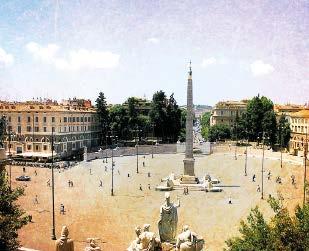


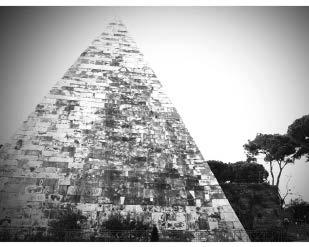
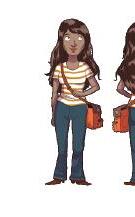




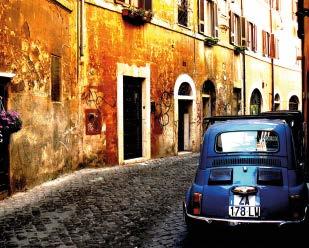







16. Look at the photos in activity 15 and complete the sentences.
a. Maya è
b. Maya è
c. Maya è
d. Maya è
e. Maya è
f. Maya è
17. Look at the highlighted words in activity 16 and complete the table.
Prepositions of place 5 p. 189
di fronte alla banca vicino all' albergo lontano centro in mezzo parco dietro stazione davanti chiesa
18. Choose an object in the class and give location clues to a classmate who will then have to try and guess what it is.
• È di fronte alla finestra e vicino alla porta...
Adesso tocca a te!
a. Choose an area of your city or town that you enjoy.
b. Take pictures and selfies.
c. Create a collage of images using one of the many apps available on-line.
d. Review the prepositions of place on page 189 and use some of them in your comments, questions or posts.
e. Present your collage to your classmates.
You can post your collage on Instagram. Before presenting the collage to your classmates, you can give it a try: record and then watch the video.


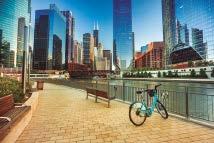
19. When you look for accommodations to visit a city, which type of area do you prefer? You can use these adjectives to help formulate an answer.

Vocabulary activities with images.

quartiere residenziale quartiere periferico


• Io preferisco un quartiere periferico perché è ... e...
20. Here are some amenities offered. Rank them in order of importance to you.
TESTO MAPPATO
21. Here are some lodging suggestions for a weekend-long stay in the city of Mantova. Identify the amenities provided with the accommodations and those available in the area for each type of lodging. Then compare it with the work of a classmate.

19/05 - 22/05 Tipologia alloggio intero camera doppia
singola
casa di Enrico e Pia
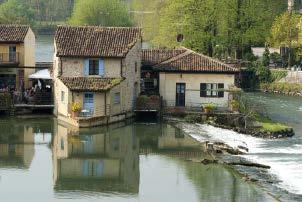
Stanza privata a
Il bellissimo loft è in pieno centro storico, in un palazzo d'epoca. La zona è tranquilla e poco trafficata e la posizione è ideale per visitare a piedi tutta la città. Adatto a famiglie e bambini. Animali non ammessi.
angolo cottura - 1 bagno - 1 letto matrimoniale1 divano letto - aria condizionata - wifi - Smart TVbiancheria letto e bagno
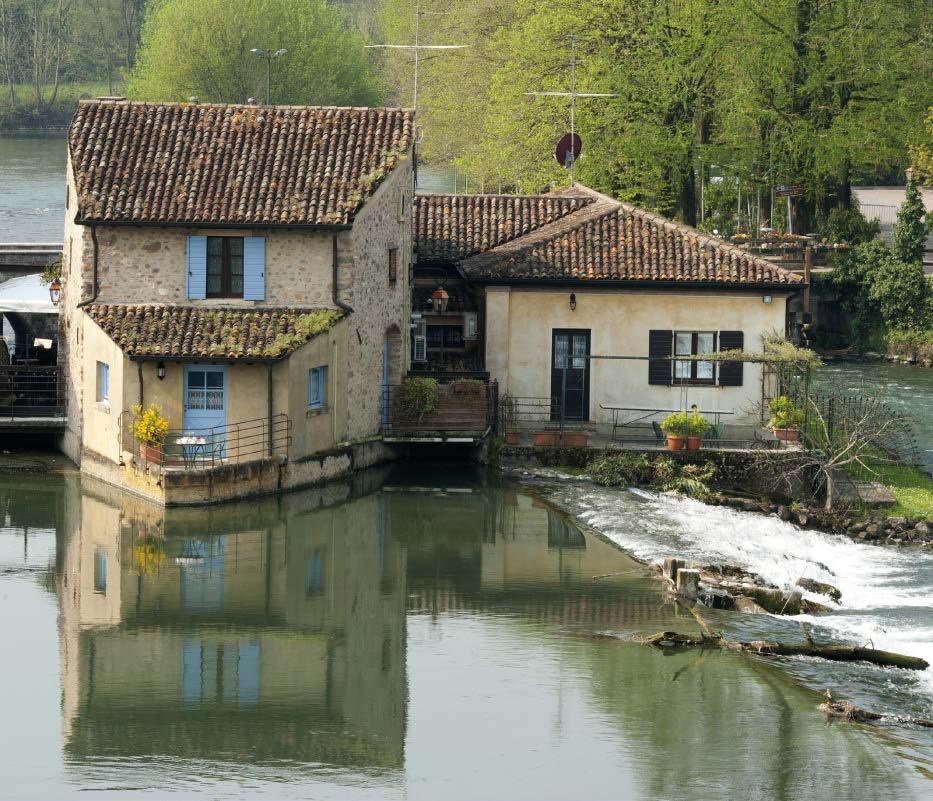
La casa è in un borgo di pescatori in riva al Mincio, a 3 Km dal centro di Mantova, immersa nel verde e nel silenzio, a contatto con la natura. Le camere hanno la vista sul giardino. Soggiorno minimo 3 notti. struttura accessibile ai disabili - cucina - 2 bagni2 letti singoli - Smart TV - aria condizionatabiancheria letto e bagno - parcheggio gratuitowifi - piscina - pulizia giornaliera - animali ammessi

Al primo piano di una tipica casetta mantovana c'è una spaziosa camera doppia (anche uso singola). Posizione ottimale: la stazione e il centro sono a due passi.
Non è consentito fumare.
uso cucina - bagno privato - 1 letto matrimoniale - biancheria letto e bagno - wifi - TV - colazioneammessi animali di piccola taglia
22. Find some information about Mantova and then choose the most enticing accommodations among the ones suggested in activity 21. Discuss it with a classmate.
• Senti, tu quale sistemazione preferisci?
• Non so… forse il loft perché è in centro e a me piace...
essere and esserci 5 p. 189
23. Read the reviews below and write down the place to which each one refers. Then choose a title for each review from the ones provided.
ristorante alloggio attività zona
"Gastronomia di qualità" "Poco confortevole" "Vista fantastica" "Natura e divertimento"
26 febbraio 2021
Abbiamo soggiornato per 3 notti e il wifi ha funzionato solo il primo giorno. Siamo andati a fine gennaio, cioè in pieno inverno, e hanno acceso il riscaldamento solo per qualche ora. In quei giorni ha fatto molto freddo!
Unica nota positiva: la posizione è ottima perché è molto vicino al centro, infatti è possibile andarci a piedi.
28 ottobre 2022
Sono venuta qui per la prima volta l'estate scorsa, a luglio, e mi è piaciuto tantissimo! Tanto verde e tanta tranquillità ma anche molte attività: escursioni in bicicletta e in barca, pesca, degustazioni, ecc.
Certo, in estate fa caldo, però vale comunque la pena. Quest’anno ci sono tornata a fine settembre… l’autunno ha colori meravigliosi qui!
03 giugno 2022
Siamo venuti a Pasqua di quest'anno e la cucina ci è piaciuta tantissimo perché si basa sui prodotti locali e il servizio è rapido ed efficiente. Ci siamo tornati a fine maggio per il mio compleanno e, anche questa volta, abbiamo mangiato veramente bene. Abbiamo speso un po'... però vale la pena perché la qualità è ottima. C'è un cortile molto carino e in primavera si può pranzare fuori. Lo consiglio vivamente!
12 marzo 2022
Sono rimasto davvero incantato dalla bellezza e dalla storia di piazza delle Erbe. Il museo e la Torre dell'orologio mi sono piaciuti davvero tanto e vale la pena salire sulla torre perché c'è una meravigliosa vista panoramica di Mantova. Meglio visitare la città a inizio estate, a giugno, o in primavera, aprile e maggio, perché fa bel tempo. Noi ci siamo stati a inizio marzo e ha piovuto per tre giorni, purtroppo!
24. Read the reviews again. Find the sentences that correspond to the statements in the following table and then complete it. Look at the highlighted words. What words are they replacing?
The locative ci 5 p. 189
È possibile andare in centro a piedi. B È possibile andarci a piedi.
Sono tornata in questa zona a fine settembre. B
Siamo tornati in questo luogo a fine maggio. B
Siamo stati a Mantova a inizio marzo. B
25. Read the reviews and underline the passato prossimo tense of the verb piacere What auxiliary verb does it need?
26. Listen to four different reviews and indicate the level of customer service quality satisfaction (eccellente = excellent, nella media = average, scarso = poor).
a. Think about a place you have visited recently (a hotel, restaurant, etc.) and/or the latest activities you have taken part in (a hike, a visit, etc.).
b. Choose a positive and a negative experience: write down what you liked and what you didn't like.
c. Review the vocabulary related to city and travels as well as the grammar on p. 189.
d. Write a positive and a negative review.
Read carefully the texts on p. 184, which are useful templates for your reviews.
You can post your reviews on a travel and activity site.
Duration: 02:27
Genre: tourist spot
Contents: presentation of an Italian city
Goals: learn to describe a city; consolidate vocabulary related to a city's architecture and landscape; talk about a travel experience; propose a weekend itinerary related to tourism

27. Watch the video. Do you know this city? What do you find most interesting? Why? Discuss with a classmate.
• Secondo me è interessante perché si possono fare tante attività…
28. Watch the video again and mark the 8 elements that appear in the video.
a. fiume
b. ponte
c. metropolitana
d. cinema
e. piazza
f. chiesa
g. stadio
h. torre
i. porto
j. mercato
k. stazione
l. campanile
m. statua
n. supermercato
29. How would you describe Pisa? Think of a similar city in terms of art, architecture or landscape. Describe it to a classmate and ask questions about her/his chosen city. Consult the list of adjectives below.
• Pisa mi sembra una città pulita / ordinata /... perché
sicura ordinata moderna caotica rumorosa
pulita vivace tranquilla
inquinata turistica elegante antica piccola


30. What activities did this couple decide to do? Watch the video again and indicate whether the following sentences are true (V) or false (F).
a. Visitano un museo.
b. Girano la città in bici.
c. Fanno fotografie.
d. Visitano i monumenti.
e. Vanno a fare shopping.
f. Vanno alle terme.
g. Fanno acquisti in un mercatino.
h. Fanno un picnic.
i. Fanno un giro in barca.
l. Vanno a teatro.

31. Think about a trip you took to a city. What activities did you participate in? How was your overall experience? What aspects did you enjoy and which ones did you not enjoy? Speak with a classmate and share your experiences.
• A giugno ho visitato Genova. Ho fatto... Mi è piaciuto
• È stata una bella / brutta esperienza perché...
32. Choose a city that you are familiar with and prepare a weekend itinerary. Jot down information about accommodations, transportation, and things to see and do.
Un fine settimana a...
INDEFINITE ADJECTIVES AND ADVERBS
They give generic, imprecise information. They can be adjectives (used with a noun):
In questa zona ci sono troppi turisti
They can be adverbs (used with an adjective) to specify the intensity:
Questo quartiere è molto tranquillo
When used as adjectives, they agree in gender and number with the noun:
L'albergo offre pochi servizi In centro c'è molta confusione
SINGULAR PLURAL troppo/a troppi/e molto/a molti/e tanto/a tanti/e poco/a pochi/e nessun / nessuno / nessuna / nessun’
Nessun, nessuno, nessuna and nessun' are always used in the singular form.
Icon to draw attention to a particular aspect, use or exception.
Indefinite adverbs are invariable, therefore they do not change endings to agree in gender and number with the adjective they accompany:
Il ristorante è molto caro Gli abitanti sono molto gentili troppo molto tanto poco
GRAMMATICA
A double page to organize linguistic resources through summary tables and clear and comprehensive explanations.
INVARIABLE NOUNS
Some nouns have only one form for the singular and the plural.
Nouns with stressed final vowel:
la città B le città il caffè B i caffè
Nouns ending in a consonant:
il bar B i bar l’autobus B gli autobus
Abbreviation of nouns:
il cinema B i cinema (cinematografo B cinematografi)
la moto B le moto (motocicletta B motociclette)
All elements that accompany these nouns (articles, adjectives, etc.) follow the general rules of agreement:
La città è tranquilla [feminine singular]
Le città sono pulite [feminine plural]
Il bar all'angolo è economico [masculine singular]
I bar del centro sono cari [masculine plural]
NOUNS AND ADJECTIVES ENDING IN -CO/-GO, -CA/-GA
For the plural of masculine nouns ending in -co and -go, attention must be paid to the position of the vocal emphasis.
Stress is on the third to last syllable:
-co B -ci
-go B -gi
turistico B turistici psicolo go B psicolo gi
Stress is on the penultimate syllable:
-co B -chi
-go B -ghi
parco B parchi alber go B alber ghi
Exceptions:
amico B amici dialo go B dialo ghi
For the plural of feminine nouns ending in -ca and -ga, the plural always ends in -che and -ghe
ban ca B ban che botte ga B botte ghe
PREPOSITIONS OF PLACE
They are used to indicate the location of objects or people in space. They are usually formed by using the prepositions a and da (davanti a, lontano da = in front of, far from). It is important to pay attention to the noun which follows the preposition to correctly combine the preposition with the definite article:
Siamo davanti al museo
La fermata è di fronte allo stadio
Il B&B è lontano dal centro
Ti aspetto in mezzo alla piazza

ESSERE AND ESSERCI
To state where someone or something is located the verbs essere and esserci can be used:
In pieno centro storico c’è il bellissimo loft. Il bellissimo loft è in pieno centro storico.
Al primo piano ci sono la camera e il bagno. La camera e il bagno sono al primo piano.
When the first piece of information is the place/location, we use esserci; when it is the object or person, we use essere
THE LOCATIVE CI
The pronoun ci can be used instead of a place and roughly translates as here or there:
A me piace questa zona, ci vengo spesso.
Bellissima Mantova! Ci siamo stati per Pasqua.
Questo ristorante è ottimo, ci torniamo di sicuro!
THE PASSATO PROSSIMO OF THE VERB PIACERE
The verb piacere is conjugated using the auxiliary essere; therefore the past participle must agree with the subject, so is necessary to pay attention to the gender and number of the thing that one likes or doesn’t like.
L'albergo ci è piaciuto molto, davvero confortevole!
[l'albergo = masculine singular]
La città è davvero bella, mi è proprio piaciuta [la città = feminine singular]
Vi sono piaciuti i locali del centro?
[i locali = masculine plural]
Le escursioni non ci sono piaciute tanto. [le escursioni = feminine plural]
p. 113 5 Prepositions with definite articles p. 162 5 Passato prossimo
Reference to the grammar tutorial.
33. Select the correct option.
a. Questa è una zona residenziale, ci sono poco / pochi negozi.
b. In centro ci sono locali molto / molti eleganti.
c. Che traffico! Ci sono troppo / troppe macchine in questa città.
Exercises to reinforce the grammar rules covered in the chapter.
d. L'albergo è in una zona molto / molta tranquilla.
e. In centro ci sono troppo / troppi turisti. Preferisco un quartiere periferico.
f. La città ha una vita notturna molto / molta vivace.
34. Write whether the following words are singular (S), plural (P) or can be both (S/P).
a. fermata B
b. giardini B
c. bar B
d. musei B
e. cinema B
f. stazione B
g. città B
h. ristoranti B
i. bici B
l. albergo B
m. loft B
n. caffè B
35. Write the plural form of the following words. Pay attention to the stress position for the masculine nouns.
a. sociologo B
b. antica B
c. antico B
d. bottega B
e. tipico B
f. lago B
36. Complete the expressions of place with the correct preposition. Pay attention to the noun that follows the preposition.
a. Il ristorante è di fronte albergo.
b. No, la fermata del bus non è lontana stadio, 5 minuti a piedi.
c. Il supermercato è accanto bar.
d. Il cinema è vicino edicola.
e. La banca è davanti cinema.
f. Il mercato è un po’ lontano scuola.
g. Il teatro è vicino locali notturni.
h. La pista ciclabile è in mezzo parco.
i. Il duomo è di fronte zona pedonale.
l. L'ufficio postale non è lontano negozi.
37. Fill in the blanks with c’è/ci sono or è/sono
a. I giardini pubblici di fronte alla scuola.
b. Qui vicino la fermata della metro.
c. L'albergo in piazza.
d. In questo quartiere molti negozi.
e. Le camere al secondo piano.
f. In centro dei locali molto carini.
g. La biblioteca vicino all'università.
h. In periferia il cinema multisala.
38. Match the sentences in the first group with the ones in the second to create some dialogues. Then, underline the part of the sentences the word ci refers to.
a. Vai in centro in autobus?
b. Conosci benissimo Venezia!
c. Quando andate a Roma?
d. Andiamo al cinema? Vieni?
e. Sei andata a vedere la mostra?
1. No, grazie. Ci vado domani con Michela.
2. No, non ci sono ancora andata.
3. Ci andiamo a giugno.
4. Sì, ci vado tutti gli anni.
5. No, ci vado in bici.
39. Complete the sentences with the verbs in parentheses, conjugating them in the passato prossimo tense. Pay attention to the auxiliary.
Quest'anno io e la mia famiglia (passare) le nostre vacanze in Umbria. (Trascorrere) una settimana eccezionale. (Soggiornare) in un bellissimo agriturismo in mezzo alla natura. (Ricevere) un'ottima accoglienza: i proprietari sono davvero gentili e disponibili. (Stare) in un appartamento comodo e accogliente, ci (piacere) tantissimo! (Mangiare) nella trattoria dell'agriturismo, che è davvero ottima! Bellissime anche le escursioni organizzate, ci (piacere) un sacco. Insomma (essere) una bella settimana e (divertirsi) molto.
Consigliamo di provare l'esperienza!
SUONI
Page dedicated to phonetics with activities for practicing pronunciation and intonation.
40. Speak these sentences to your classmate: what’s your intonation like? Then, listen to the recording and write whether the sentences express surprise (S), interest (I) or disappointment (D).
a. Cosa?! Ti piace cucinare?!
b. Cosa ti piace cucinare?
c. Il prossimo treno è alle 10 devo aspettare un’ora!
d. Oh no! I biglietti per il concerto sono finiti!
e. Davvero sei andato in campeggio?! Proprio tu che ami le comodità?!
f. Silvia ha telefonato, dice che non può più venire a cena.



41. Listen to the recording and place the accent mark on the words in bold where necessary.
a. Ci vediamo da te a mezzogiorno.
b. Non ho mai visitato ne Roma ne Napoli.
c. Questi biscotti sono ottimi con il te, ne prendo una scatola?
d. Rosa e molto disponibile, da sempre una mano a tutti.
e. Da qui non si vede bene il panorama, spostiamoci li
f. Se non trovi gli occhiali, prova a guardare la, sulla tua scrivania.
g. I biscotti li compri tu?
h. Si, la danza e la musica sono la mia passione.
i. Susanna si alza tutte le mattine alle 8.
42. Listen to the recording and circle which word you hear.
a. rosa / rossa
b. dici / dicci
c. cola / colla
d. cappello / capello
e. pena / penna
f. osa / ossa
Pronunciation and intonation exercises.
CITY SITES AND SERVICES
Visual dictionary to categorize the vocabulary.
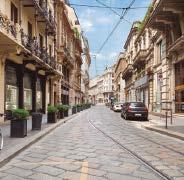




PAROLE
Section for the categorization and practice of the vocabulary learned in the chapter.

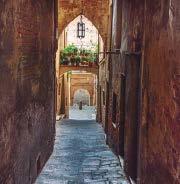
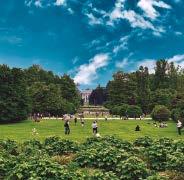



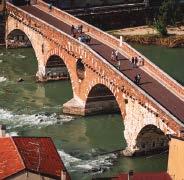


ADJECTIVES TO DESCRIBE A CITY grande


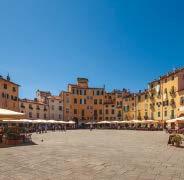
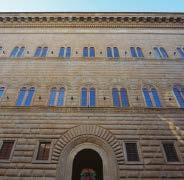





vivace

caro/a
MEANS OF TRANSPORT
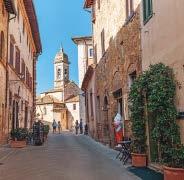
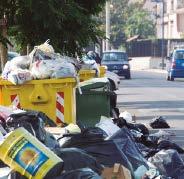
tranquillo/a sporco/a

economico/a
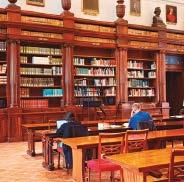
silenzioso/a

(la) bicicletta
(il) bagno privato
AMENITIES
(la) camera doppia (il) letto matrimoniale
(la) camera singola (il) letto singolo

rumoroso/a pulito/a
(l') autobus (la) metropolitana (il) tram (il) motorino

(la) biancheria letto e bagno
(l') aria condizionata
(la) colazione inclusa
(l') uso cucina
(la) piscina
(la) piscina
(la) pulizia giornaliera
(il) wifi
(gli) animali ammessi
(il) parcheggio (l')accessibilità 193
centonovantatré
43. Complete the following mind maps
Varied exercises to practice the vocabulary.
luoghi della città
mezzi di trasporto
44. Match the words to create city sites and services.
caratteristico/a pessimo/a
46. Fill in the blanks with the following adjectives. elegante suggestivo/a caotico/a
a. È una città : c'è tantissimo traffico, in giro c'è sempre tanta gente.
b. È una zona , con le botteghe degli artigiani, le stradine strette e le casette colorate.
c. È un ristorante : si mangia male, è caro e c'è sempre troppa gente.
d. È una via , con tanti negozi famosi e bar alla moda.
e. La piazza è : con la chiesa antica, i monumenti e i palazzi signorili.
47. Write the following words or expressions next to their corresponding pictograms.
periferico
tipico
ciclabile pubblico balneare storico pista trasporto quartiere zona centro ristorante
45. Match the adjectives on the left with their opposites.
a. caro/a
b. rumoroso/a
c. piccolo/a
d. moderno/a
e. sporco/a
f. tranquillo/a
g. sicuro/a
1. silenzioso/a
2. pericoloso/a
3. economico/a
4. vivace
5. grande
6. antico/a
7. pulito/a
colazione accessibilità
parcheggio gratuito camera doppia
aria condizionata bagno privato
Combinations with verbs
48. Complete the list of combinations by adding as many words as you can. in albergo in un appartamento in centro fuori città soggiornare una camera un tavolo prenotare in bicicletta a piedi andare una passeggiata fare un'escursione una città visitare un museo
49. Where is Maya located in each situation in relationship to the Coliseum: davanti, vicino, dietro, in mezzo, di fronte or lontano?






Discourse markers exercises.
57 Discourse markers: non so, senti
50. Match each question to the appropriate reply. Which discourse marker expresses doubt and which is used to draw someone’s attention? Then, listen to the recording to check if you are correct. Lastly, translate the replies into English.
a. Preferisci soggiornare in centro o fuori città?
= b. Ti è piaciuta la visita guidata?
= c. Secondo l'articolo, Roma è la città più bella.
= d. Dove prenotiamo? In albergo o in un B&B?
= 1. Senti, prenotiamo in tutti e due e poi decidiamo.
2. Non so... Forse fuori città stiamo più tranquilli.
3. Non so... È stata interessante, però molto lunga.
4. Senti, a me piace molto di più Firenze.
A double-page supplement to expand the cultural content covered in the chapter.


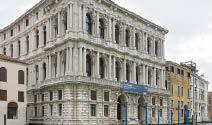
Texts that encourage students to think about specific aspects of Italian culture.

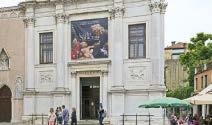
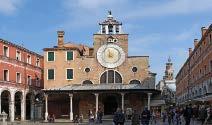

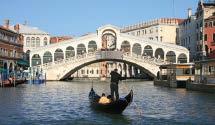
SESTIERE
SESTIERE




REGIONE: Veneto
SUPERFICIE: 416 km2
ALTITUDINE: 2,56 m sul livello del mare
POPOLAZIONE: 263.736
ABITANTI: veneziani
LINGUE: italiano, dialetto veneziano
SIMBOLO: Leone alato
SANTO PATRONO: San Marco evangelista

MEZZI DI TRASPORTO: gondola, motoscafo, barca, vaporetto, taxi acqueo
FESTE E MANIFESTAZIONI: Carnevale (febbraio), Festa del Redentore (terza domenica di luglio), Regata storica (prima domenica di settembre), Mostra del Cinema (fine agosto-inizio settembre), Biennale (maggio-novembre)
CURIOSITÀ: 400 ponti, 100 campanili
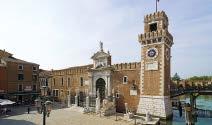
SESTIERE CASTELLO
San Zaccaria

51. Look at the map and the information box, then answer the following questions. Lastly, compare them with a classmate.
a. Quante persone vivono a Venezia?
b. Come si chiamano le persone che vivono a Venezia?
c. Si organizzano degli eventi culturali?
d. Si può andare in autobus?
e. Quanti quartieri ci sono?
Varied activities: comprehension, production, and interaction.
52. Read this riddle and try to complete it by filling in the missing word.
“ Vedo ogni giorno gli innamorati nella gondola passare. Sono molto alto, sono il ponte di
”
53. Look at the picture: do you recognize any means of transport? Work with a classmate.
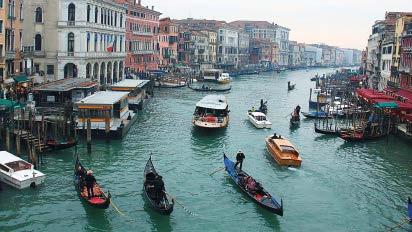
54. Read the information about Venice. Which statements do you think are true and which false? Then listen to the interview and write which statements are true (V) or false (F) according to Lucia. Lastly, compare them with your initial hypothesis. V F
a. Il centro storico è caotico.
b. Non è una città rumorosa e neanche pericolosa.
c. È una città pulita.
55. Work in groups. Choose an area in Venice, do some research and create an info card based on the given prompts. Then post your work around the classroom for your classmates to see.
1. Nome 2. Descrizione 3. Da vedere
1. Work in groups. Choose a specific area or city you like and that is worth visiting.
COMPITI FINALI
A page of final projects, one to be carried out individually and one in groups, for students to put into practice what they learned from the chapter.
2. Think of the characteristics you wish to point out and select the most significant places of interest.
3. Create a presentation aiming at promoting your proposed area or city. Choose your favorite format: PowerPoint, a poster, a brochure, a photo collage, Prezi, a video, etc.
Organize your team work: decide who does what (who takes notes, who makes the drawing, etc.). Come to an agreement taking into account everyone’s opinions and suggestions. WORKING STRATEGIES
You can post your presentation on Instragram or TikTok, a blog, on Youtube etc.
1. Choose a neighborhood of a city or town that you know and like.
CITTÀ: Palermo
QUARTIERE: Seralcadio
CARATTERISTICHE: centrale, autentico, vivace, antico...
DA NON PERDERE: la Cattedrale, il Teatro Massimo, il mercato del Capo
DOVE MANGIARE: Trattoria Supra i Mura, Al Manar...

centonovantotto
Virtual classroom suggestions.
2. Write down the most significant characteristics as well as several suggestions for those who wish to visit this place.
3. Write a few short paragraphs in support of your proposed neighborhood.
Before writing your text, take notes and make a list of the things you want to write about.
You can share your description by posting on a blog, on Facebook, on Tripadvisor etc.
Would you like to request a free sample?
Please scan the code!

Would
Instagram: klettwl
Facebook: KlettWL
YouTube: KlettWorldLanguages

EAN: 843601673-691-6
LinkedIn: klettwl
Spotify: Klett World Languages
Pinterest: klettwl